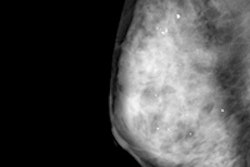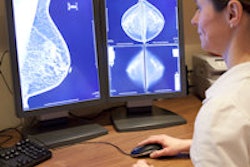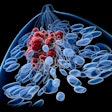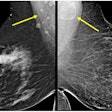Bruno Barufaldi and colleagues from São Carlos, Brazil, and the University of Pennsylvania examined the impact of using 2D reconstructed mammograms with digital breast tomosynthesis, rather than a combination mode of the two technologies. For the study, the group included 991 women who received either a combination of 2D and 3D mammography or 3D mammography with 2D image reconstruction over two 13-day periods in 2014 and 2015. The researchers calculated the average glandular dose (AGD) using customized software.
During the 2014 time period, 485 combination studies were performed, with an average AGD per view of 4.28 mGy. During the 2015 time period, 506 tomosynthesis exams with 2D image reconstruction were conducted, with an average AGD of 2.42 mGy -- a dose reduction of 43%, according to the group.




















